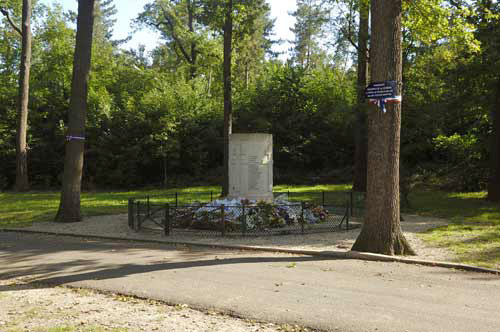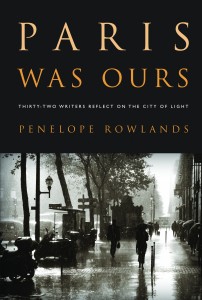By Penelope Rowlands
 Visitors to Paris are often enthralled by the majestic – if, to my mind, artificial looking – landscape of the Bois de Boulogne. This 2,000-acre park in the city’s southwest corner is dense, not just with vegetation but with history, too. One spot that few tourists stumble upon combines both. Set among the trees, a concrete monument marks the spot where, during the Nazi Occupation of Paris, thirty-five young Resistance fighters, betrayed by a Gestapo agent, were killed by German soldiers in an ambush on August 16, 1944. The horror of this event was compounded by its timing: Just over a week later, Paris was liberated and the Nazis expelled.
Visitors to Paris are often enthralled by the majestic – if, to my mind, artificial looking – landscape of the Bois de Boulogne. This 2,000-acre park in the city’s southwest corner is dense, not just with vegetation but with history, too. One spot that few tourists stumble upon combines both. Set among the trees, a concrete monument marks the spot where, during the Nazi Occupation of Paris, thirty-five young Resistance fighters, betrayed by a Gestapo agent, were killed by German soldiers in an ambush on August 16, 1944. The horror of this event was compounded by its timing: Just over a week later, Paris was liberated and the Nazis expelled.
The Monument to the 35 Resistance Martyrs, while little known to visitors, is so important to the French that President Nicolas Sarkozy made a point of visiting it on his inauguration day in 2007, describing the massacre it commemorates as “useless, absurd… not an act of war but an act of vengeance.”
This isn’t a particularly handsome structure, but it’s a deeply affecting one, especially when you come upon it unexpectedly in the woods, as I did the first time I saw it, out bicycling with my young son. A plaque on a neighboring tree is more moving still. It reads: “Respect this oak. It contains traces of the bullets that killed our martyrs.”
As the editor of Paris Was Ours, a compilation of recent essays about the City of Light, I was surprised how often the book’s contributors – most of whom have spent years in the city – used the word ‘melancholy’ when describing it. This monument provides a key to that underlying sadness. It reminds us, as Paris so often does, that a painful, bloody history lies beneath this glamorous, fast moving, streamlined modern city. And that it never quite goes away.
Paris is a graveyard, in a sense. Marble plaques to Resistance fighters – dead impossibly young – dot its streets. And some of the city’s prominent tourist spots, the Arc de la Triomphe among them, are monuments to the fallen.
For tourists, all this sacrifice and bloodshed seems abstract. But Parisians know it in their bones. They know how hard won the city’s beauty has been. Every child in France is schooled in it – the thousands of years of invaders, repressions, plagues, wars, and massacres on which their fabled civilization rests. No wonder there’s melancholy in the air.
About the author: Penelope Rowlands was raised in London and New York and lived in Paris for many years. A journalist and critic, she has contributed to Vogue, the Wall Street Journal, Architectural Digest, Art+Auction, Metropolis, and the New York Times Magazine. Her most recent book is A Dash of Daring: Carmel Snow and her life in Fashion, Art and Letters, a biography of the legendary editor-in-chief of Harper’s Bazaar. She is also the author of three illustrated book, Jean Prouve: Visionary Humanist; Eileen Gray: Modern Alchemist; and Weekend Houses.

